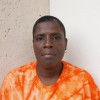In the United States, communities of color experience the highest rates of HIV infection. Racial and ethnic disparities reveal themselves most strongly when it comes to basic access to care. Notably, the Washington, D.C. Through Positive Eyes workshop, held in July 2012, included many participants who shared stories of drug use and addiction, a prominent feature of the AIDS epidemic in the nation’s capital. The inequities built into the judicial system in the U.S. can be overwhelming and are magnified for people living with HIV. The urgency of the participants’ stories was further amplified by the fact that the workshop took place shortly before the XIX International AIDS Conference in Washington, D.C. Drawing attention to the need for compassionate addiction treatment and needle exchange programs.
Washington D.C.'s AIDS Epidemic, as of 2012
- Number of people living with HIV
- 16,072
- New infections
- 680
- AIDS-related deaths
- 221
Treatment
- Antiretroviral therapy provided to all diagnosed HIV-positive
- 8,449
- % linked to care within 3 months of diagnosis
- 87%
- % viral load undetectable
- 61%
A Model Local Response
The XIX International AIDS Conference, held in Washington D.C., turned the spotlight on the epidemic in that city, which emerged as a model local response. New infections and AIDS- related deaths had declined by 42% and 36% respectively since 2008. D.C.’s successful needle exchange programs had cut new diagnoses among injecting drug users in half since they began in 2007. By 2012 everyone in the city had access to antiretrovirals, regardless of ability to pay or immigration status.
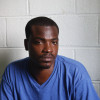
Christian
When I came out of the closet at sixteen, it was hurtful to my family. They’re devout Baptists, in North Carolina, and to be gay—and then to be black, and then to be in a small town—was kind of …
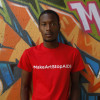
D'Angelo
My mother and I used to be very close before she found out that I was gay. We were inseparable. I was fourteen when she found out. Things started going downhill from there. She didn’t approve and we …
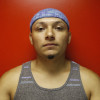
Edgar
I am from El Salvador. I came here to be reunited with my mother. When I arrived she gave me one hug and one kiss. That was it. I expected more after such a long time. I was eighteen and I hadn’t …
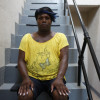
Ericka
I was raped in prison. When they told me I had HIV, I was nineteen years old. From then until I was twenty-five, I prostituted. It was the only way to get more money to supply my habit. I had a …
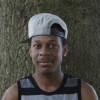
Gemini
I was diagnosed with HIV when I was sixteen. I didn’t cry. All I could think about was my mother because that’s what she passed from. She was a prostitute and she used to shoot up intravenous drugs …
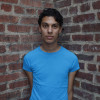
Jason
I have a tattoo that says “Made In Puerto Rico.” I’m proud of being Puerto Rican. For one thing, the island is progressive when it comes to acceptance of the LGBTQI community. My family had no …

John
I was born with HIV twenty-three years ago. At the time my mother and father got together, my father was doing drugs. He contracted HIV and I was born with it. So I always knew I was sick. I didn’t …
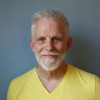
Kyle
I found out I was HIV-positive in 1987, when I went to my doctor for a regular check-up. Within a couple of years I had full-blown AIDS. I had five T-cells and I named them all: Lucy, Ricky, Fred, …
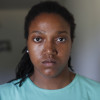
Mary
I’m twenty-three years old, and I’m bringing swag to HIV awareness. I’m swagtastic. I was born HIV-positive. My biological mother passed away of complications from AIDS. I really felt abandoned. I …
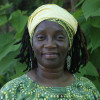
Sabrina
I was diagnosed twenty-three years ago, when I was thirty-three and pregnant with my daughter. I was still using. I smoked crack cocaine and drank alcohol and smoked cigarettes and marijuana, in …
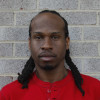
Tori
My name is Tyranny but everybody calls me Tori. I found out I was HIV-positive on June 8, 2010, in Atlanta. I called my mother in D.C. and told her, and she was like, “Just get back here.” She called …
Supporters
Through Positive Eyes in Washington, D.C., was organized in partnership with ARTLAB+ at the Hirshhorn Museum and the Smithsonian Folklife Festival. A coalition of sponsoring organizations included: La Clínica del Pueblo, Community Education Group, HIPS, Metro TeenAIDS, National Council of Negro Women, SMYAL, Us Helping Us, Whitman-Walker Health, and The Women’s Collective. Major funding was provided by The Herb Ritts Foundation, with additional funding from The Ford Foundation, The Andy Warhol Foundation for the Visual Arts, International AIDS Society, and UCLA.
